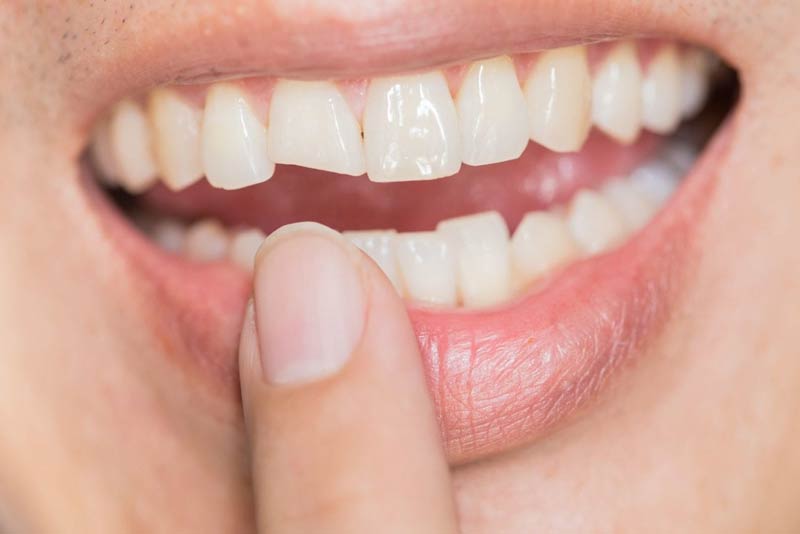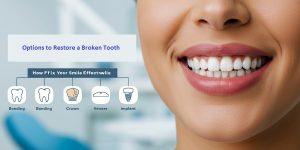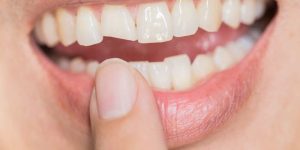Defending Your Smile Against Tooth Fractures
Introduction
Do you want to know more about tooth fractures? This blog post is for you. Welcome to today’s blog post about understanding the various types of tooth fractures and how to keep your smile protected. Tooth fractures can happen for different reasons, such as trauma or untreated cavities, and they can impact people of all ages. In this blog, we will delve into the different types of tooth fractures, which include craze lines, enamel fractures, dentin fractures, vertical root fractures, and complete tooth fractures. Additionally, we will talk about preventive measures and the treatment options available to ensure the well-being and longevity of your teeth. Let’s jump right in and expand our knowledge on this significant subject. Pearl Dental Group is widely recognized for having the top-rated dentist in Toronto, offering exceptional dental care and a commitment to patient satisfaction that sets them apart from other practices.
What Are Tooth Fractures?
Tooth fractures are actually cracks or breaks that might occur within the structure of a tooth. This is a common dental issue that can affect people of any age. There are several factors that can cause tooth fractures, such as accidents, injuries from sports, biting hard objects, or even untreated cavities. It is important to have a good understanding of the various types of tooth fractures so that we can find the right treatment and prevent any further complications.
Read More: How Long Do Veneers Last?
Types of Tooth Fractures
Craze Lines:
Raze lines are small cracks that form on the outer layer of the tooth, known as the enamel. They are usually thin and don’t go deep into the tooth. Some people may be concerned about the way they look, but the good news is that they are generally harmless and don’t need immediate treatment.
These cracks can develop over time due to normal wear and tear on the teeth, or habits like grinding or biting on hard objects. Although craze lines don’t pose any immediate health risks, they can trap stains and affect the appearance of the tooth.
Enamel Fractures:
Enamel fractures happen when cracks go beyond the outer layer of enamel, but the dentin layer underneath remains undamaged. These fractures can occur due to traumatic incidents such as falls, accidents, or biting on hard objects. Enamel fractures might lead to sensitivity towards hot or cold temperatures and can increase the chances of tooth decay if not addressed promptly.
Dental bonding is a great option for treating smaller fractures. In this procedure, dentists apply a resin material that matches the color of your tooth to the broken area, which gives it a natural and seamless appearance. Bonding restores the look of your tooth and also restores its functionality. However, if the fracture is larger, a dental crown may be suggested. Dental Crowns will not only protect the tooth but also provide added support to ensure its long-term health.
Dentin Fractures:
Dentin fractures occur when cracks spread from the enamel to the dentin layer below. Dentin is a sensitive layer with tiny tubules that connect to the nerve endings of the tooth. This means that experiencing dentin fractures can result in increased sensitivity to temperature changes and pressure.
If you’re feeling sharp pain when biting or chewing, or if you have increased sensitivity, it’s really important to get dental care as soon as possible. Ignoring fractures in the dentin can lead to more serious problems like infections or the fracture getting worse. Depending on how serious it is, the treatments could include dental bonding, dental crowns, or even a root canal to fix any damage to the tooth’s pulp.
Vertical Root Fractures:
Vertical root fractures happen when cracks develop at the root of a tooth and extend upwards. These fractures are not easily detectable as they are not visible without any assistance. Causes like trauma, the presence of large fillings, or simply the natural aging process of the tooth can result in vertical root fractures.
Dealing with vertical root fractures can be a complex task, often requiring the extraction of the affected tooth. However, the key to avoiding further complications lies in early detection. Through regular dental check-ups, including X-rays, our experienced dental professionals can swiftly identify these fractures at an early stage and have a thorough discussion with you about the most appropriate treatment options available.
Complete Tooth Fractures:
Split tooth, or complete tooth fractures, happen when a tooth splits into two or more separate pieces. This type of fracture can cause severe pain and have a major impact on your ability to chew or bite properly. Complete tooth fractures are often the result of accidents or untreated cracks that have worsened over time.
A complete tooth fracture is classified as a dental emergency and needs immediate dental care. Treatment options for such fractures may involve root canal therapy, dental crowns, or, in severe cases, tooth extraction.
How to Prevent Tooth Fracture?
- Wear Mouthguards: When you take part in sports activities, wear a mouthguard that fits perfectly into your mouth. This custom-fit mouthguard acts as a protective cushion and absorbs any potential impact on the face reducing the chances of tooth fractures.
- Avoid Chewing on Hard Objects: Remember to avoid biting or chewing on hard items such as ice, pens, or popcorn kernels. These habits can place too much stress on your teeth, making them more vulnerable to fractures. Instead, consider trying to adopt healthier choices like sugar-free gum or soft snacks.
- Maintain Good Oral Hygiene: Taking care of your oral health is crucial to avoid tooth fractures. Make sure to brush your teeth at least two times a day using a toothbrush with soft bristles and fluoride toothpaste. Moreover, don’t forget to floss daily to remove plaque and food particles from the spaces between your teeth and along the gumline.
- Regular Dental Check-ups: make sure to maintain the habit of dental checkups. Remember that early intervention is key to preventing additional damage and the need for more extensive treatments.
Tooth Fracture Treatment
In treating tooth fractures, the appropriate approach depends on the type and severity of the fracture. Here are some common treatment options:
- Dental Bonding: If you have minor fractures, dental bonding is the perfect solution for you. By applying a tooth-colored resin material to the affected area, dentists can reshape and strengthen the damaged tooth using a special light. This technique not only enhances the appearance of the tooth but also ensures that it functions properly, resulting in a natural and seamless outcome.
- Dental Crowns: For more extensive fractures or when the tooth structure is compromised, dentists often suggest dental crowns. These crowns are like personalized caps that cover the entire visible portion of the tooth, providing it with strength, protection, and a better appearance. The materials used for making these crowns can vary, including porcelain, ceramic, or metal alloys, depending on what the patient needs.
- Root Canal Therapy: If a tooth gets fractured and the fracture reaches the pulp, which is where the tooth’s nerves and blood vessels are located, root canal therapy might be required. This treatment involves removing the infected or damaged pulp, sterilizing the root canal area, and sealing it with a filling material. By undergoing root canal therapy, the tooth can be saved from extraction and its function can be restored.
- Tooth Extraction and Replacement: If the tooth fracture is severe or irreversible, extracting the tooth becomes necessary. But don’t worry! Our dental clinic has various alternatives to replace the missing tooth, including dental implants, dental bridges, or removable dentures. These restorative options aim to bring back the natural look and functionality of your tooth.
Conclusion
In a nutshell, having knowledge about different tooth fractures is vital for a healthy smile. From craze lines to complete fractures, each type requires specific treatment approaches. By taking preventive measures like wearing mouthguards, practicing good oral hygiene, and avoiding chewing on hard objects, you can minimize the risk of tooth fractures.
At Pearl Dentistry in North York we offer various treatment options, including dental bonding, dental crowns, root canal therapy, teeth whitening, dental veneers and tooth replacement. If you have any concerns about tooth fractures or need professional guidance, we invite you to reach out to our experienced dental team at Pearl Dental Clinic.Book a consultation and let us help you maintain your oral health and restore your beautiful smile.
As your trusted cosmetic dentist in Toronto, we take pride in offering advanced cosmetic dentistry services that go beyond appearance, also prioritizing the overall health and functionality of your teeth for a truly comprehensive approach to your dental well-being.






